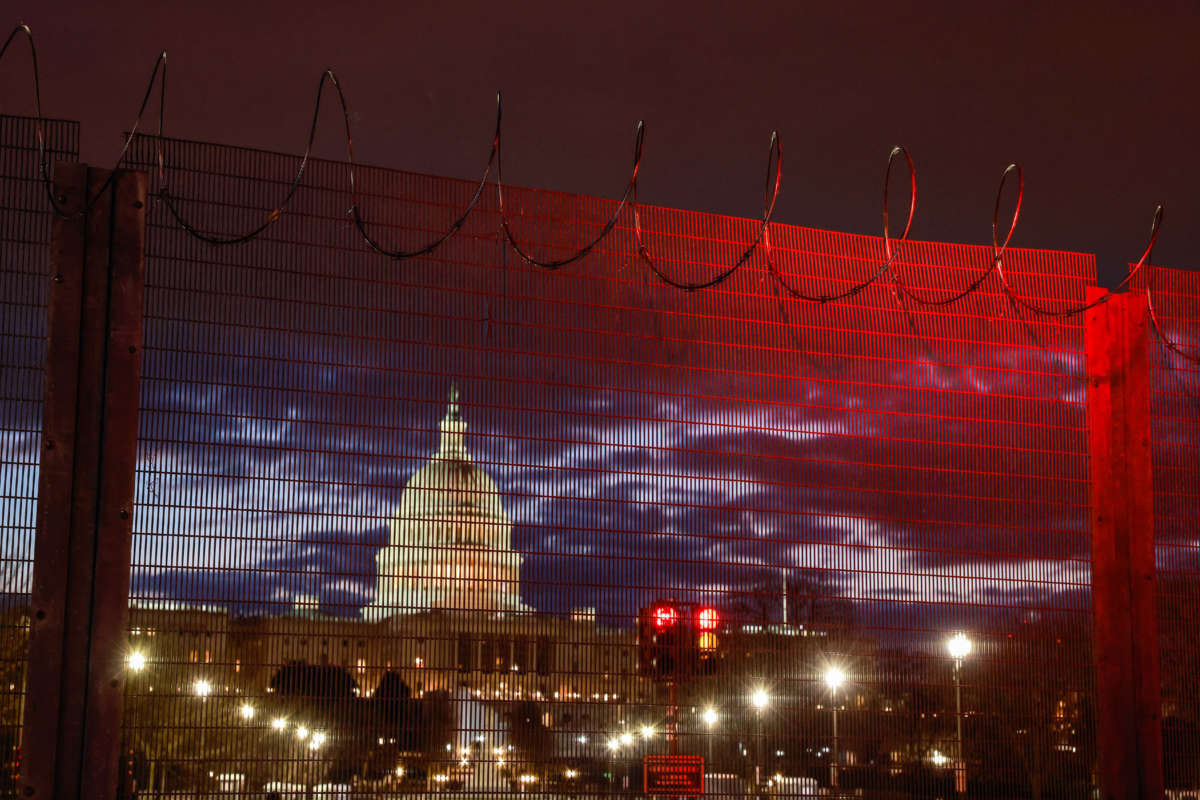Acting Capitol Police Chief Yogananda Pittman said on Thursday that there should be permanent fencing installed around the Capitol following the attempted coup of January 6. The suggestion immediately faced backlash from many D.C. residents and the media who say that fencing off the U.S. Capitol is antithetical to what the building stands for.
“In light of recent events, I can unequivocally say that vast improvements to the physical security infrastructure must be made to include permanent fencing, and the availability of ready, back-up forces in close proximity to the Capitol,” said Pittman in a statement.
“I look forward to working with Congress on identifying the security improvements necessary to ensure the safety and security of the Congress and the U.S. Capitol,” she continued. Pittman is also facing scrutiny from the Capitol Police union, which said on Wednesday that it had no confidence in the Capitol Police leadership.
As Pittman and others pointed out, increased physical security around the Capitol has been suggested throughout history. However, even the temporary security measures that are currently in place around the Capitol, erected in response to threats from Donald Trump supporters online following the violent attempted coup earlier this month, have faced scrutiny by residents of the city.
Symbolically, some say, building permanent fencing would create too much separation between the public and the Capitol. “Right now, the Capitol complex is designed to be accessible to Americans,” tweeted NBC’s Capitol Hill correspondent Kasie Hunt. “There is a lawn in the front where local parents take their children to go sledding. The trails around the building and across the green spaces are popular with runners.”
The Capitol complex isn’t just somewhere that important people go to make laws, many residents said; it is enmeshed within the community as much as any other public part of the city. Others dismissed the idea as “security theater” meant to distract from the Capitol Police’s actions on January 6.
A permanent fence would also pose a darker problem, some say, in doubling down on increased policing measures that have been shown to be historically insufficient in providing actual security while simultaneously feeding into further surveillance and paranoia.
Some pointed out that the Capitol Police shouldn’t necessarily be authorities on the subject of security around the Capitol, considering that the events on January 6 are largely viewed as a result of their failures to protect the building and the lawmakers inside. “Our elected representatives do not have to automatically do what the USCP [United States Capitol Police] brass demand be done in order to deflect attention from their own massive failings,” tweeted The Washington Post’s Mike DeBonis.
Many have also criticized the idea that increased policing measures like what Pittman is suggesting would be helpful at all. After the violence shown by police at last year’s Black Lives Matter protests, policing has faced increased scrutiny among progressives, who question the role of police in society.
After 9/11, many pointed out, concerns over security reached a high and led to many increased security measures across the country — further empowering police. “Hundreds of millions of dollars of post-9/11 security improvements did not prove sufficient to keep a few thousand people from storming the gates,” wrote Robinson Meyer for The Atlantic.
“Relying on police to solve the problem of violence like January 6 places a tremendous amount of faith in police, hardly apolitical actors, taking the threat seriously,” wrote Kelsey Atherton in Vice. “Giving police new powers to pursue domestic terrorism overlooks the vastly expanded set of police powers since 9/11,” many of which have been used disproportionately against left-wing causes, studies have found.
One former FBI agent told Truthout’s Candice Bernd after the attempted coup that increasing the use of law enforcement was not the answer to security concerns in the U.S. because the existing system is not built to address them. “This system is not adequately focused on real threats and instead is targeting groups that are expressing themselves or otherwise just minding their own business,” the agent said.
Outside threats, the de facto target of Pittman’s suggestions, are not necessarily the problem, some lawmakers have pointed out. The problem, they say, lies in the threat posed by certain elected officials whose offices lie within the Capitol complex. GOP lawmakers, some carrying guns, refused to comply with House security rules after January 6 and some were allegedly seen showing Trump militants around the Capitol ahead of the attack.
Rep. Alexandria Ocasio-Cortez said that she feared for her life after the attempted coup partially because she was afraid fellow lawmakers would give up her location. Rep. Marjorie Taylor Greene, who has ties to the QAnon movement, for instance, has on social media sympathized with people threatening to kill Democrats like House Speaker Nancy Pelosi in the past.
Angry, shocked, overwhelmed? Take action: Support independent media.
We’ve borne witness to a chaotic first few months in Trump’s presidency.
Over the last months, each executive order has delivered shock and bewilderment — a core part of a strategy to make the right-wing turn feel inevitable and overwhelming. But, as organizer Sandra Avalos implored us to remember in Truthout last November, “Together, we are more powerful than Trump.”
Indeed, the Trump administration is pushing through executive orders, but — as we’ve reported at Truthout — many are in legal limbo and face court challenges from unions and civil rights groups. Efforts to quash anti-racist teaching and DEI programs are stalled by education faculty, staff, and students refusing to comply. And communities across the country are coming together to raise the alarm on ICE raids, inform neighbors of their civil rights, and protect each other in moving shows of solidarity.
It will be a long fight ahead. And as nonprofit movement media, Truthout plans to be there documenting and uplifting resistance.
As we undertake this life-sustaining work, we appeal for your support. Please, if you find value in what we do, join our community of sustainers by making a monthly or one-time gift.
